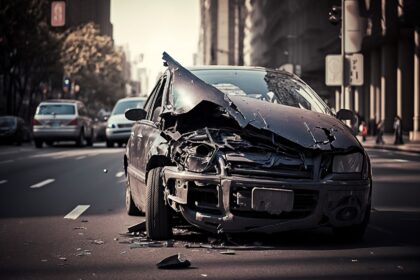Kansas and Missouri Have Very Different Car Accident Laws

Car accidents can have devastating effects on people’s lives. In the United States, each state has its own laws that govern car accidents, including personal injury claims. This article will compare and contrast the biggest differences between Kansas and Missouri car accident laws with respect to personal injury.
Determination of Fault
First, it’s important to note that both Kansas and Missouri follow a “fault” system when it comes to car accidents. This means that the person responsible for the accident is also responsible for paying for any damages or injuries caused by the accident. However, the laws in each state differ when it comes to how fault is determined.
Kansas and “Modified Comparative Negligence” Concept
In Kansas, fault is determined based on the percentage of fault assigned to each party involved in the accident known as the “modified comparative negligence” rule. This means that even if a person is found to be partially at fault for an accident, they can still recover damages. However, the amount of fault attributed to the plaintiff must be 50 percent or less in order to receive compensation.
Missouri and “Pure Comparative Fault” Concept
In Missouri, fault is determined based on the concept of “pure comparative fault.” This means that even if a person shares ninety-nine percent of the fault for the accident, they can receive compensation. In other words, pure comparative fault allows your damages to be reduced by the percentage you are at fault.
Statute of Limitations
Another key difference between the two states is the statute of limitations for personal injury claims. In Kansas, a person has two years from the date of the accident to file a personal injury claim. In Missouri, a person has five years from the date of the accident to file a personal injury claim. This means that a person has more time to file a claim in Missouri, which can be beneficial for those who may not realize the full extent of their injuries until later on.
Economic and Non-economic Damages
In terms of damages, both states allow for economic and non-economic damages. Economic damages include things like medical expenses and lost wages, while non-economic damages include things like pain and suffering. However, there is a cap on non-economic damages in Missouri, which limits the amount a person can recover for things like pain and suffering.
Insurance Requirements
Lastly, it’s worth noting that Kansas and Missouri also have different insurance requirements. In Kansas, drivers are required to carry liability insurance, which covers damages and injuries caused to other parties in an accident. In Missouri, drivers are required to carry liability insurance as well as uninsured motorist coverage, which provides additional protection in the event that the other driver does not have insurance.
While both Kansas and Missouri follow a fault system for car accidents, there are significant differences in how fault is determined, the statute of limitations for personal injury claims, damages, and insurance requirements. It’s important for drivers to be aware of these differences and to understand the laws in their respective states in order to protect themselves in the event of a car accident.









